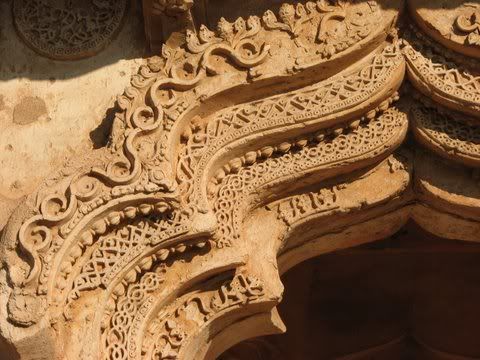The Hampi Visit 170109
The visit to Hampi was undertaken as a postscript to the Daroji visit; but it is such a huge complex, that I realized very quickly that I was not going to do much more than just scratch the surface of this World Heritage Site. So here are some of the highlights of the trip….
The detail on the monuments is so incredibly beautiful, let me start with a closeup of the Lotus Mahal:
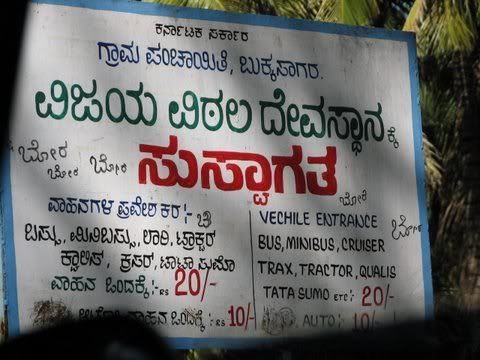 Please note that you can also drive to the complex in a tractor!
Also please note: some "culturephobe" has written "bore, bore, bore" in Kannada, all over the left-hand-side of the
Please note that you can also drive to the complex in a tractor!
Also please note: some "culturephobe" has written "bore, bore, bore" in Kannada, all over the left-hand-side of the 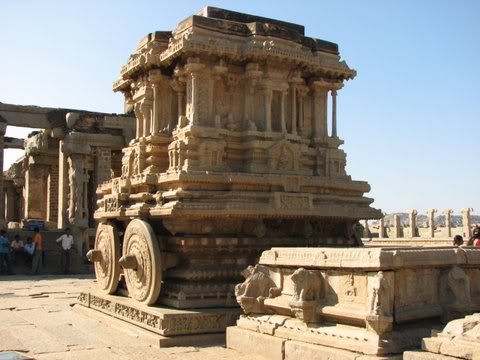 These are the famous musical pillars in the complex, with a guide explaining to the tourists, the musical notes they produce when struck...
These are the famous musical pillars in the complex, with a guide explaining to the tourists, the musical notes they produce when struck...
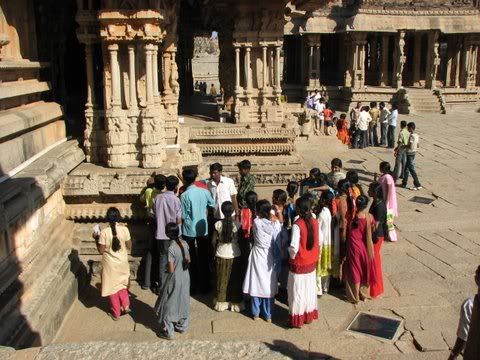 The temples are full of the most intriguing figures and friezes sculpted on the pillars; I photographed many of them but here is just one sample, of an old man with a covering over his head:
The temples are full of the most intriguing figures and friezes sculpted on the pillars; I photographed many of them but here is just one sample, of an old man with a covering over his head:
 To give an idea of how difficult the sculpting must have been, here's a view of one temple, and the road leading up to the eyrie on which it is perched:
To give an idea of how difficult the sculpting must have been, here's a view of one temple, and the road leading up to the eyrie on which it is perched:
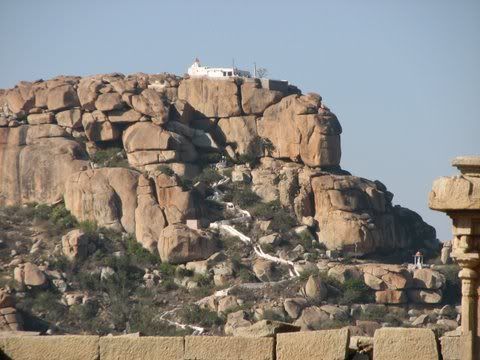 We then went to the area where the Queen's Bath is situated; this is the building:
We then went to the area where the Queen's Bath is situated; this is the building:
 Here are the ruins of the temple complex, remains of a mighty empire:
Here are the ruins of the temple complex, remains of a mighty empire:
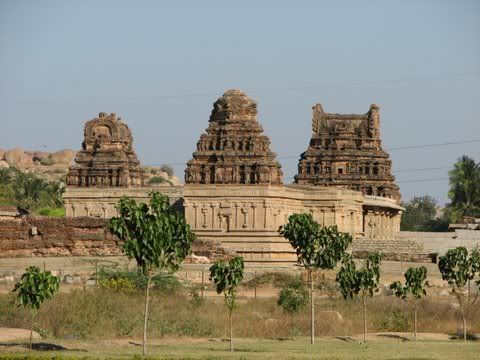 One can see the ancient Kannada inscriptions on the temple walls:
One can see the ancient Kannada inscriptions on the temple walls:
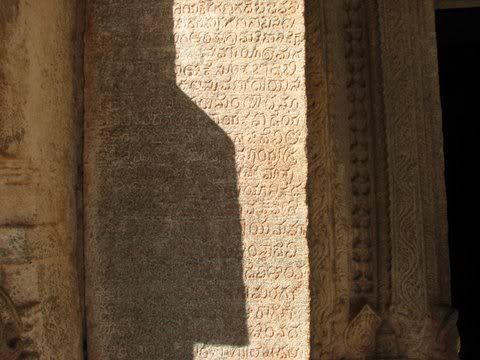 The Mahanavami Dibba is also exquisite, and I enjoyed seeing the cavalry depicted on its sides:
The Mahanavami Dibba is also exquisite, and I enjoyed seeing the cavalry depicted on its sides:
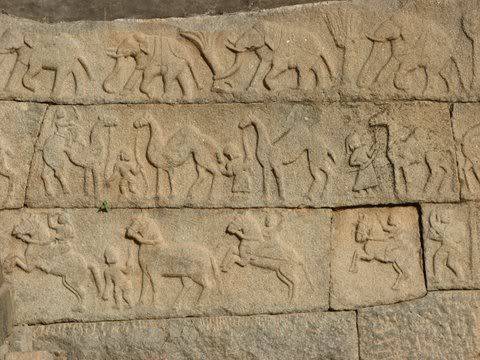 But of course, Nature always trumps Man; here are the natural rock formations at Hampi, which are even more awesome than the various parts of the complex:
But of course, Nature always trumps Man; here are the natural rock formations at Hampi, which are even more awesome than the various parts of the complex:
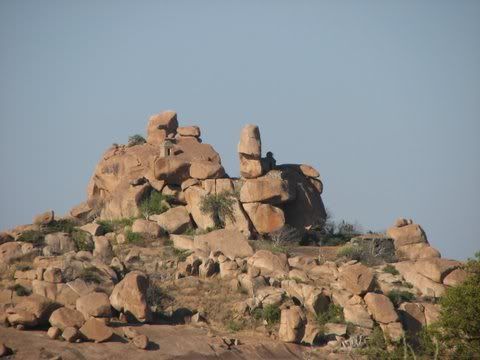 We then visited the Lotus Mahal, what a beautiful building it is!
We then visited the Lotus Mahal, what a beautiful building it is!
 Close by are also the elephants' stables:
Close by are also the elephants' stables:
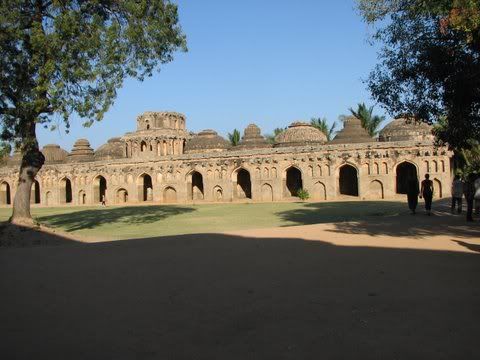 Here's how one of the ceilings of the elephant stables looks. Can you imagine someone decorating a garage (which houses today's steed) this way?
Here's how one of the ceilings of the elephant stables looks. Can you imagine someone decorating a garage (which houses today's steed) this way?
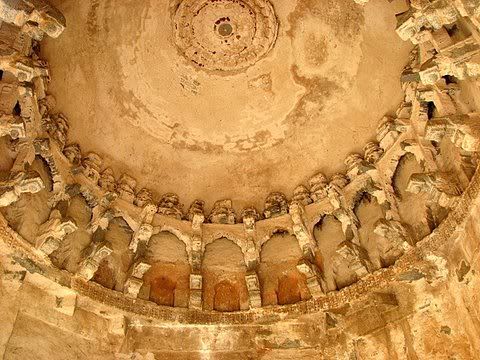 On top of a rocky outcrop are these multistoreyed buildings:
On top of a rocky outcrop are these multistoreyed buildings:
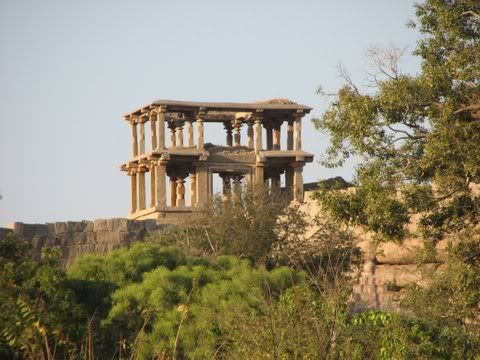 The iconic image of Hampi, to me, was the image of Lakshmi Narasimha at the open-air temple:
The iconic image of Hampi, to me, was the image of Lakshmi Narasimha at the open-air temple:
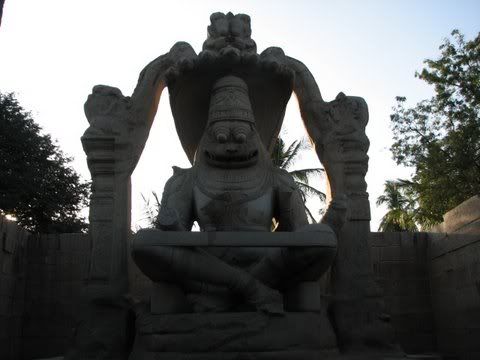 Next to it is the Badavilinga Temple, where the lingam rests in a perpetual pool of water, much like the Jambulingeshwara at Tiruvanaikkaval :
Next to it is the Badavilinga Temple, where the lingam rests in a perpetual pool of water, much like the Jambulingeshwara at Tiruvanaikkaval :
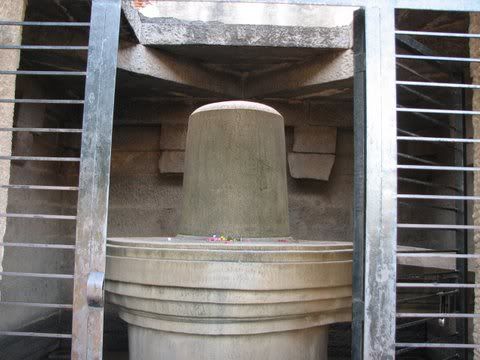 There are two Ganesha idols, the Sasivekalu and the Kadalekalu idols...here's the Sasivekalu one:
There are two Ganesha idols, the Sasivekalu and the Kadalekalu idols...here's the Sasivekalu one:
 We finally wound up at the Virupaksha temple complex near the banks of the river, where this map of the complex was very illuminating:
We finally wound up at the Virupaksha temple complex near the banks of the river, where this map of the complex was very illuminating:
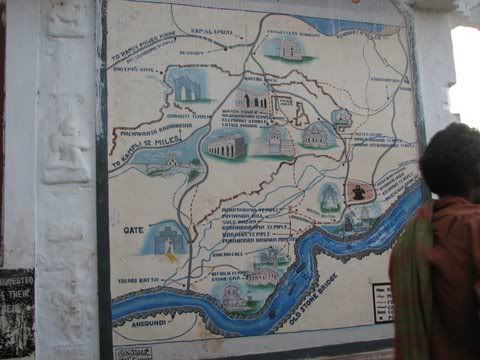
The beauty of the temple tower in the evening light was indescribable…
I will close with this unusual three-headed Nandi idol that I found at the entrance of the Virupaksha temple. The treasures of Hampi would take one months to soak in….I need to go back there again…
Hope you enjoyed your Hampi e-tour! For photos that I have not put in here, click on one of these snaps, and it will take you to my Photobucket site where you can see the rest, too! I have included many snaps of the various signboards that describe the various heritage monuments.

